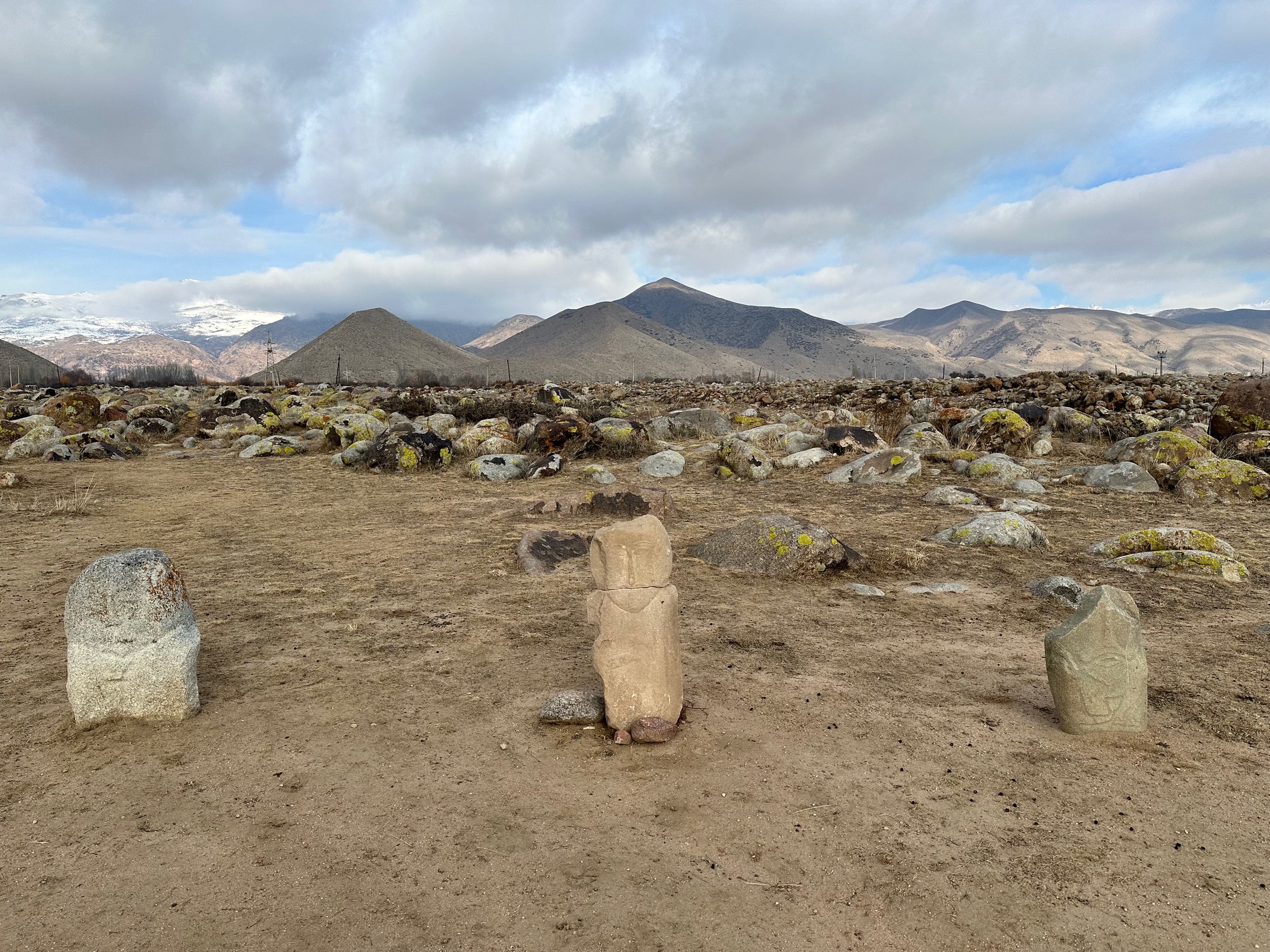Whispers of Spirit, Earth, and Time in Kyrgyzstan’s Open-Air Petroglyph Museum
Just outside Cholpon-Ata, in the sweeping embrace of the Issyk-Kul mountains, lies a field that feels at once ancient and alive—Kyrgyzstan’s Stone Garden, also known as the Petroglyph Open-Air Museum. It’s not just a historical site. It’s a threshold—a portal between worlds, where wind and memory conspire to slow you down and draw you in.
Spread across 42 hectares of wild alpine steppe, the landscape is dotted with massive boulders etched with symbols, animals, and celestial stories that stretch back over 3,000 years. Ibex leap across the granite. Sun disks glow in still silence. Shamans dance in a motionless ritual. Each carving captures not just a moment, but a vibration—a felt presence of the people who once gathered here, aligned with the rhythms of earth, cosmos, and spirit.
And while this is, by definition, a museum, it doesn’t feel like one. There are no walls, no glass cases, no hushed tones, and no security guards. Instead, there’s wind. The crunch of gravel beneath your feet. Light that drapes over stone like silk. And something subtler: the watchful stillness of the stones themselves, which seem less like relics and more like elders. You don’t just look at them. You feel them looking back.
A Healing Landscape at the Crossroads of Civilizations
Kyrgyzstan is more than mountains and sky—it’s a crossroads of cultures, memories, and mythologies. For millennia, nomadic peoples, Persian traders, Buddhist pilgrims, and Sufi mystics have passed through this land, weaving it into one of the great tapestries of the Silk Road. The terrain is dramatic—yes—but it’s also energetically softening. It holds you, whether you realize it or not.
In many Indigenous and spiritual traditions, stone is considered the memory of the earth—the bone of the earth. And here, surrounded by the Tien Shan mountains and the sacred waters of Lake Issyk-Kul, memory feels thick in the air. It’s no wonder that so many travelers report a sense of internal quiet here. A softening. A recalibration.
Walking among these ancient petroglyphs is more than a cultural visit—it’s a kind of healing pilgrimage. The boulders aren’t just etched with symbols; they’re vibrating with meaning. Some say the site was used for ceremonies and sky-watching; others believe it was an energetic map—marking where the veil between worlds grew thin. Whatever your interpretation, something shifts inside you as you move through.
For the Modern Seeker
In a world that demands speed, performance, and certainty, Kyrgyzstan offers something rare: spaciousness. In the Stone Garden, you’re invited not to "do" but to be—to wander, to listen, to imagine. It’s the kind of travel experience that rewires your nervous system without asking anything in return.
For those on a transformational journey—whether spiritual, creative, or personal—this corner of Kyrgyzstan hums with subtle medicine. It doesn’t push; it remembers for you, until you begin to remember yourself.
So if you ever find yourself in Cholpon-Ata, set aside your checklist. Let the wind guide you through the stones. Let your shadow fall against the carvings. And let the land whisper what it’s been holding—quietly, patiently, for centuries.
